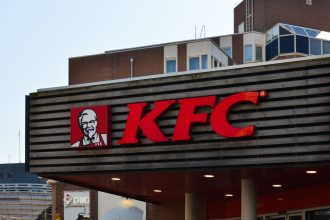Technological innovation has allowed the hospitality industry to overcome many of the obstacles thrown its way over the last three years. Technology and the restaurant industry have never been more intertwined, and the technology used to get through the pandemic isn’t going away.
Here are five restaurant technology trends that can help you futureproof your business.
Contactless Dining

Whether it’s through an app, through your website, or a digital menu linked from a QR code, contactless dining and payment processing will continue to be a major trend in 2023 and beyond.
As we move from a pandemic to an endemic, many customers are looking to reduce their human-to-human contact, and one of the simplest ways for them to do that is through a digital menu. For the germaphobe in all of us, digital menus reduce the potential of getting sick via the common surface of a printed menu, and digital menus don’t have to be cleaned between uses.
Not only are digital menus more sanitary, but they also offer a lot of secondary benefits for your restaurant. A well-designed digital menu is easy to change and update. As opposed to a printed menu, which must be redesigned and reprinted, digital menus can be changed on the fly to reflect seasonal dishes, daily or weekly specials, and items that have been 86’d. Digital menus are also more interactive and more informative.
Though your guests could get to your digital menu in a myriad of ways, the quickest and easiest is with a QR code. You’ve likely seen QR codes before. They are scannable images that can connect any smartphone user via their camera app to any link on the internet, including a link to your digital menu.
Not only should your digital menu be easy for your customers to find via a QR code on something like a table tent, but it should also be “mobile friendly.” In 2023, most of your guests will search for restaurants and peruse menus via their mobile devices, not their laptops or desktop computers. So, just as important as having a digital menu is having a digital menu that is optimized for smaller screens.
While it might be smart to keep some printed menus on hand for the luddites, digital menus are an important part of the future of the dining experience. Creating QR codes and digital menus doesn’t need to be expensive, complicated, or time-consuming. There are tools online that can create QR codes for you.
Delivery

Technology isn’t the only thing that changed during the pandemic. Many consumer habits did as well. The habits we picked up during lockdown, like ordering food for delivery, will continue to be important for the future of the restaurant industry.
It’s no secret that delivery carried many small businesses through the pandemic. But not only was it great for business, but it was also great for the consumer.
Third-party delivery apps made it easy for consumers to get delicious food brought right to their homes.
These delivery apps aren’t without their shortcomings. They can charge exorbitant fees that cut into a restaurant’s bottom line, and there is a loss of quality control when the food leaves your staff’s hands.
But the pros outweigh the cons. Delivery apps provide a lot of free advertising, allowing you to reach customers that have never heard of your brand. In addition to the free advertising, delivery apps are important because the twenty-first century consumer demands them. Unless you offer your own delivery service that you promote vigorously, you will likely need to work with delivery apps, or risk losing business to your local competitors.
Ghost Kitchens and Virtual Brands

Ghost kitchens and virtual brands were a pivotal part of the restaurant industry in 2022. If the success of ghost kitchens in Asia can teach us anything, it is that the trend will likely become even more important in the coming decades.
Ghost kitchens are essentially restaurants without dining rooms. They can operate out of a number of spaces, but most use commissary-style kitchens. Commissary kitchens are rentable, shared kitchen spaces. They typically come with everything you need, like a fryer, oven, and range.
In contrast, virtual restaurants (a.k.a. virtual brands or virtual kitchens) operate within a more traditional, brick-and-mortar restaurant, but they only make food for delivery. Virtual restaurants are a way for brick-and-mortar restaurants to add an additional revenue stream, without the need to buy more locations, squeeze more tables into their dining room, and hire more front-of-house staff.
In 2023, you can expect ghost kitchens to help many first-time restaurateurs get their businesses off the ground. But, of course, the industry veterans aren’t going to give up their market share without a fight.
Automation and Smart Tech

The incorporation of automation and smart technologies will likely be one of the most obvious and most important technology trends of 2023.
While automation hasn’t been as important in the restaurant industry as it has been in manufacturing, or even in food processing, it is coming. With the rise of labour costs and the difficulties of staffing, some restaurants have already started thinking outside of the box.
California-based burger joint CaliBurger was an early adopter of automation. Its kitchen is manned by a burger-flipping bot, appropriately named “Flippy.” The quick-service chain Chipotle has also invested in their own non-human chef named “Chippy.” And robots aren’t just in the kitchen. Some restaurants are trying robot food runners and busboys.
If these technologies seem extreme, most automation in the restaurant industry today is taking the form of smart technology. Things like tabletop tablets and digital kiosks are popping up everywhere from fast food restaurants like McDonald’s to chain behemoths like Olive Garden, where they can make ordering and payment processing a cinch.
Smart technology is fairly easy to implement in your restaurant, and it can lead to faster turnover and an overall better quality of service. Not only does smart technology make sense for many restaurants, especially high-volume ones, they also work perfectly for those businesses and customers that prefer a contactless, or at least a contact-reduced, dining experience.
Loyalty Programs

The coming year will likely be another tough one for the restaurant industry. Many economists and business insiders are warning of a coming recession. If that’s the case, business owners should take steps now to prepare.
One of the best ways to weather tough times is to invest in your loyal regulars. First-time customers are great, and you should work to recruit more of them through various marketing campaigns. But when the economy takes a turn for the worse and the average consumer tightens their purse strings, it’s your loyal regulars that do the most to keep your small business afloat.
Regulars are far cheaper to maintain than first-time customers are to recruit. Not only do regulars require far less marketing energy and dollars than new customers, they also typically spend more than other customers per visit.
For 2023, you can focus on growing your customer loyalty with a very simple piece of restaurant tech: the customer loyalty program.
Loyalty programs come in many different shapes and sizes. You can offer a free appetizer, a free drink, or a free dessert after a certain number of visits. You could offer a percentage-based discount on an entire check after a certain number of meals, or a certain amount of dollars spent at your restaurant.
Your restaurant loyalty program can be as complex or as simple as you want. Some businesses use digital loyalty programs. After the customer registers with a phone number or email, or through an app on their smartphone, the program keeps track of their spending for them. You can find plenty of digital loyalty programs to choose from. Some are cheaper and more intuitive than others, but many of them can be integrated directly into your POS system, making accruing rewards easy for your customers and redeeming rewards easy for your staff.






